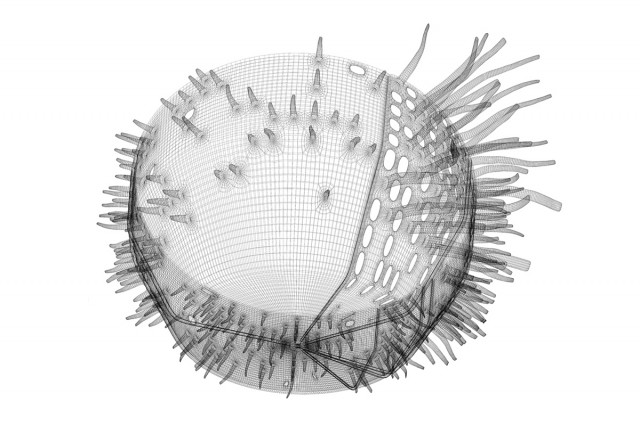Looking Outwards 2
BLADE RUNNER revisited >3.6 gigapixels – François Vautier
BLADE RUNNER revisited >3.6 gigapixels from françois vautier on Vimeo.
In his installation for WORLD EXPO Shanghai 2010, François Vautier composites all 167,819 frames of Ridley Scott’s Blade Runner into a colossal 3.5 gigapixel image. Since it is impossible to show in detail on a single display, Vautier employs a virtual camera – represented by a glowing cube – to pan across the image. This creates a zootrope effect that echoes early projectors, as Vautier explains in the description of the video. Insofar as there is no visual indication of a continuous image, the artwork’s premise diverges its visual impact. There is tension between the proposed concept – a continuous image – and the way in which the eye interprets the succession of what appear to be separate frames. We have to take on faith that there really is a single image, since this fact is unknowable from the visual evidence alone. The conceptual layer of the artwork alienates and deconstructs its visceral draw.
Mickey Mouse Club – Matthew Plummer-Fernandez

“Blurring images has become both a widely recognised cultural aesthetic and also used to obscure the identity of persons photographed or filmed. After recent clashes with 3D printers over IP concerns I’ve chosen to disguise my latest derivative of Mickey Mouse and to explore this smoothed 3D aesthetic that is counter to the popularity and push for highly detailed 3D printing.” – Matthew Plummer-Fernandez
Plummer-Fernandez appropriates and deforms Mickey Mouse in “Mickey Mouse Club”, a wry response to recent concerns about the impact of 3D printers on intellectual property. As explained in a Creative Applications post, Plummer-Fernandez’s process is straightforward; he smoothes the Mickey Mouse mesh in Processing (akin to blurring a 2D image) before 3D printing the output. Although the final mouse is unrecognizable as Mickey, one can conceive of an intermediary stage in the blurring at which time the iconic mouse is recognizable, yet somehow perverted. This raises an interesting question: at what point in the smoothing of the mesh does it cease to be Disney’s property? And by extension, how does a corporation like Disney react to the widespread remixing of objects? I anticipate artists will continue to critique institutions and mass culture in coming years, leveraging generative and/or digital fabrication techniques in innovative ways.
InfObjects – Johannes Tsopanides

Tsopanides’ “InfObjects” are data visualizations in physical form. The design of each cup, bowl or plate depends on the energy cost and price of the food to which it corresponds. In addition to mapping one signal to another (I recall Campbell’s prescient Formula for Computer Art), there is a functional and symbolic dimension to Tsopanides’ objects; their usefulness as dinnerware is determined by the CO² quotient of the dish in question, which in turn determines the number of holes in the object. So the plate generated by butter (517 g of CO²) is less usable than the tomato plate (315g CO²), which calls into question the relative merits of butter. The important point is that through generative design, Tsopanides makes tangible and even humorous the grave threat of greenhouse gasses. He furthers an environmental agenda by challenging our assumptions about the function of everyday objects. In doing so, InfObjects exemplifies art as activism: art making in the service of a social good.